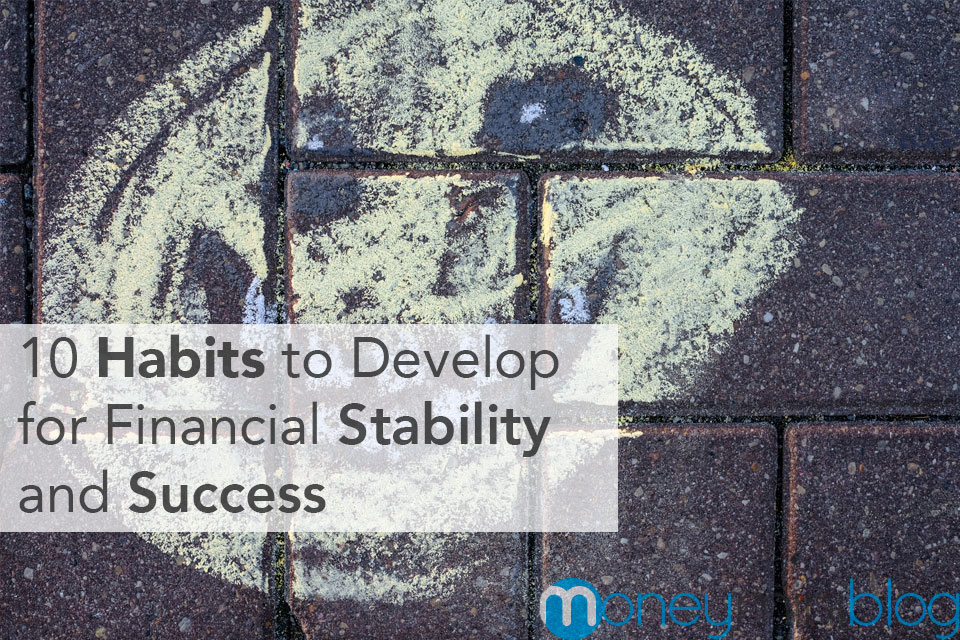
Making sure you have enough wealth through old age used to be simpler. The idea behind pensions was that your employer would guarantee you a set payout once you retired and handle the investing decisions required to grow the money you would eventually receive.
But the pension safety net is full of holes. For one, fewer and fewer employees have access to them: The proportion of private workers covered by them fell from 38% in 1980 to just 20% in 2008. And even if you are lucky enough to have a pension, there's no guarantee you'll actually get the funds at retirement age: That's because unrealistic expectations on investment returns have emptied the reserves of the federal program protecting pensions from losses.
With pensions shrinking, the 401(k) has become the preferred investment vehicle of choice: It puts the onus of retirement savings equally on both the employer and employee (assuming matching contributions); and leaves investing decisions to the employer. 401(k) s really took off about a decade ago, when the Pension Protection Act of 2006 allowed companies to "automatically enroll employees in 401(k) plans, and offer target-date funds as a default option," LearnVest reports.
Of course, retirement accounts like 401(k) s are just one way to invest, and if you are already saving the recommended 12% to 22% of your income for your golden years, you might be looking for other ways to grow your wealth — through smart investments. Even if you just have an extra $100 or $1,000 lying around, it's a good idea to harness that cash right away.
"Investing is important because it lets you put your money to work," financial advisor Douglas Boneparth of Bone Fide Wealth said in an interview. "By assuming a certain level of risk, you have the opportunity to earn a reward greater then what simply putting your money in the bank can do. Investing is fundamental to growing your wealth over the long term."
Mic consulted investment professionals to come up with nine investment ideas that will help you feel more financially secure — with explanations about how to start investing in each.
- Stocks
No matter what your current financial position, you should be invested in stocks — though not necessarily individual ones, due to their price volatility. A great way to get the high returns of stocks, while minimizing risk, is to invest in a low-cost, diversified index fund like the Vanguard S&P 500. Or you could buy an exchange traded fund that tracks an index, such as the SPDR S&P 500 ETF.
The chart above shows how much faster your money can grow by investing in an S&P 500 index fund — versus safe-but-low-return Treasury bonds. You can more about funds further below.
There are never-ending debates about how how much of your investment portfolio you should have in stocks at a given moment. One rule of thumb says it should be 100 minus your age — so if you're 25, you should actually have 75% of your portfolio in stocks. If that sounds like a lot, consider that the Nobel-prize-winning economist Robert Shiller said in May that the market could go up 50% more before there's a significant market downturn.
If you do opt for individual stocks, pay attention to three key considerations: diversification, price-to-earnings ratios and your risk-adjusted return (or Sharpe ratio). The goal is to maximize your returns while minimizing risk.
How to invest: Outside of a retirement account, you can open up an account at an online brokerage. NerdWallet advises picking a broker with low fees and/or low account minimums — here is their list of best brokers for beginners. Some, like TD Ameritrade and OptionsHouse, require no minimum deposit. Generally, you can expect to pay $5 to $10 per stock trade depending on the broker, but there are also free services like Robinhood or LOYAL3.
- TIPS and other bonds
Bonds come in many flavors, from ultra-safe Treasuries backed by the U.S. government to somewhat riskier corporate bonds issued by companies. Unlike stocks, which give you a small stake in a company, bonds are like loans or IOUs — and you are effectively the lender. One particular type of government bond, Treasury Inflation Protected Securities or TIPS, actually protects your spending power by adjusting in value based on consumer price inflation.
Most people buy bonds to offset the risk of their stock investments since bond prices tend to hold steadier in good times and bad. "Bonds by their very nature are designed to be boring," MarketWatch says. "That's their beauty."
Stock prices can change significantly throughout any given trading day. That doesn't typically happen with bonds — you're in it for the long haul. Nonetheless, their returns are still quite respectable: Since 1926, bonds have surged an average of 5% to 6% per year on average, versus the 10% for stocks, CNNMoney notes.
Certain bond returns also have the benefit of being tax free: "Interest on municipal bonds is tax-free on the federal level," the Balance notes, "and, for investors who own a municipal bond issued by the state in which they reside, on the state level as well. In addition, the income from U.S. Treasuries is tax-free on the state and local levels."
How to invest: Open up a brokerage account, and then decide if there are individual bonds you'd like to purchase, or if there's a larger bond fund that lets you invest in multiple bonds at once. Kiplinger's recommends a few bond funds, including Vanguard Short-Term Investment Grade Investor and Vanguard Limited-Term Tax-Exempt Investor in part because of their low investment fees. You can buy TIPS directly from the US Treasury.
- Passive funds and ETFs
Again, if you don't like the idea of picking individual stocks, you can buy passive products that cover entire sectors, or even entire indices. These are called index funds or ETFs. Because these aren't actively managed, they tend to cost less than funds with more human involvement. And some so-called "balanced funds" actually include a mix of stocks and bonds.
The main difference between ETFs and more traditional funds is that ETFs trade like stocks, with intraday movements; while index funds and other mutual funds are priced once a day, after markets close.
ETFs have become so cheap and popular that there are now more of them than individual stocks. And whereas many mutual funds require a minimum purchase of $500 to $3000, you can easily invest in ETFs for less than $100 in an initial investment. But while ETFs require less money to buy, they may cost more in terms of expenses: "Of the more than 1,900 available ETFs, expense ratios ranged from about 0.10% to 1.25%," Investopedia notes. "By comparison, the lowest [mutual] fund fees range from .01% to more than 10% per year for other funds." So be sure to check expenses before you buy.
How to invest: Investing in ETFs is similar to investing in stocks, if not easier. If you'd like to bet on social media stocks, there's an ETF for that — the Global X Social Media ETF. Just log into your brokerage, find the ETF you want to purchase, and buy or sell it; no minimum investment is required. To invest in a mutual fund, you generally need to open an account with the company that offers it, such as Vanguard or T. Rowe Price. Just remember — as soon as you are betting on one industry, instead of the broader market, you lose the protection of diversification. That's a reason to bet only your "play" money.
- Life insurance
First, a big warning: The life insurance industry is plagued with misleading salesmanship and scams. That's a big reason to do your homework and ask lots of questions before buying in. That said, getting insurance as you get older — and especially after you have kids — can be a smart idea.
One kind of life insurance actually lets you create an investment account with part of the money you've paid in to the account: Permanent or whole life insurance allows you to borrow against the value of your policy, and even set up an investment account — in addition to paying out a death benefit. "It's a personal loan from an insurance company, using the life insurance cash value as collateral," finance writer Michael Kitces explains. Instead of having to pay back a bank, you pay yourself and your heirs back.
But there's risk involved here, because you're still in debt: "Even if the net borrowing cost is low because the cash value continues to appreciate, that’s still growth that the investor might have enjoyed for personal use, if the loan was never taken out in the first place," he says. What's more, fees and commissions make it a more costly investment than stocks or bonds.
A second kind of life insurance, known as term life insurance, doesn't let you create an investment account with the funds but does give your heirs a great return on the money you pay for it. Using this example from Investopedia, if you buy a term life insurance policy at age 30, you could get a 20-year term policy with a death benefit of $1 million for $480 per year. If you die at age 49 after paying premiums for 19 years, your beneficiaries will receive $1 million tax-free — even though you only paid out $9,120.
How to invest: All the major insurance companies offer both term and permanent life insurance.
- Bitcoin and other cryptocurrencies
There are intense arguments being had across the investment community about investing in bitcoin and its sister currencies like ether, traded over the platform Ethereum. But if your risk appetite is large enough (namely, if you can stand to lose a lot of money), you may want to consider cryptocurrencies.
Assets like bitcoin, ether and litecoin have seen explosive price growth recently. Nothing like them has ever come along before, and their adoption only continues to increase. However, they remain extremely volatile, and there can be regular "flash crashes" in their value.
Mic recommends not investing any more money in cryptocurrencies than you are willing to lose, as some investors have occasionally lost all their money. One advantage of investing in cryptocurrencies, however, is that you can purchase fractions instead of entire units, which for bitcoin have been as high as $2,000 recently. That means you could spend as little as $5 on 1/400th of a bitcoin — which shouldn't make much of a dent in your retirement savings.
How to invest: Coinbase, a simple platform that allows you to link your debit or credit card account, is one of the largest bitcoin-buying platforms. Other popular platforms within the crypto world are Kraken, which lets you buy a wide range of currencies; and Gemini.
- Real estate
Like stocks, real estate prices have seen a rapid rise since the end of the financial crisis. And there is no sign that this trend will stop — for instance, Miami just posted its best ever month of May for single-family homes, "as total home sales, median prices, dollar volume, traditional sales and luxury transactions surged," according to the Miami Association of Realtors.
Here's the Case-Shiller home price chart for the U.S. as a whole, representing major cities: It's a composite index that shows if home prices are rising or falling in 20 top cities. Since 2012, the index has showed steady growth.
But rising prices doesn't mean that now is the right time to get into the real estate market. In fact, it could mean you should hold off, as prices in some markets, like New York and San Francisco, are considered extremely expensive compared with history. What's more, a shortage of homes on the market may be artificially inflating prices.
Buying a home can be risky and costly, and people may overestimate how much their homes will grow in value over the years, as Mic has previously reported. And unlike stocks and bonds, which you can sell at any time, it can take months to sell a home, which can tie up your funds indefinitely. If buying will result in higher monthly costs than renting, you may want to wait until the economics are in your favor.
How to invest: The obvious answer, of course, is to buy property in an area that is expected to see demand grow. But what if you can't afford a down payment right now? New platforms have emerged to allow folks with less cash to take advantage of the property market boom without becoming a homeowner. Fundrise is one option. It allows you to become a real estate investor with as little as $1,000. You can also invest in real estate investment trusts, or REITs, which operate commercial real estate like malls. These are usually public companies with their own stock tickers that you can invest in through your brokerage account. The largest REIT is Simon Property Group. Lastly, there are real estate ETFs that track real estate stocks; a popular one is the Vanguard REIT ETF. (Again, even in ETF form, these are risky products, and you should be investing only that money you can afford to lose.)
- Classes that give you in-demand skills
It's often said that the best investment you can make is in yourself. There's no better way to act on this than by upgrading your education with an advanced degree or specialized certificate that will keep your skills fresh and open up new career possibilities. There are also many classes you can take on the fly.
Some of the most popular courses to take right now are in coding languages like Python, Java or Ruby on Rails. The demand has led to dozens of coding academies popping up around the country. But there are several other growing industries that you can jump into in a matter of weeks with the right certificate, like fitness instruction or even cannabis management.
How to invest: There are loads of courses you can take from almost anywhere in the world that will provide you with new training or a new degree in a skill that you can then use to further advance your career. Many are available online on sites like Coursera and some are even free.
- Shares in a privately-held startup
In the dot-com boom of the late '90s and early 2000s, going public was the thing to do: It was a sign that your company had made the big time and was ready to handle the responsibility of being a public company. Fast-forward around two decades later and going public is now viewed by some as a sign that a company has run out of private backers and needs more cash from "dumb money." As a result, large swaths of the general public have missed out on the spectacular growth of companies like Airbnb, Uber and Slack, which have all remained private.
But a handful of platforms have come along to take advantage of the Jumpstart Our Business Startups (JOBS) Act, passed in 2012 to allow non-accredited investors (read: people with a net worth less than $1 million) to invest in private companies and startups. Equity crowdfunding companies will allow you to invest in startups and take advantage of the startup boom that has been quietly but strikingly taking place in the U.S. since the recession.
Some caveats: You'll want to watch out for low quality-control, as this is a new and highly risky space. And unless you make more than six figures, you'll likely be limited to no more than $2,200 in annual investments of this type, per SEC rules — that are there to protect you.
How to invest: SeedInvest lets anyone invest in companies that have been vetted by the site as financially stable with a favorable upside. The company charges a 2% non-refundable processing fee, up to $300 per investment, in return for providing a menu of fast-growing startups. Other companies offering a similar service include, NextSeed, WeFunder, and IndieGogo's First Democracy VC.
- A video camera
Confused? Don't be. Some of the most successful entrepreneurs these days can be found on YouTube. And it's not just the ones starring in their own self-produced comedy videos. Musicians, makeup artists and even magicians have all developed channels with hundreds of thousands of followers who want to learn more about their skills.
To get started, all you need is a video camera. Inexpensive models like the Nikon Coolpix S7000 and Canon PowerShot ELPH 330, both of which are recommended by Vlogger Pro, sell for less than $200, making them a relatively small investment with a potentially big payoff.
5-Minute Crafts have nearly 4 million subscribers. If you think you're handy yourself, you could create a similar channel and start raking in the bucks. According to MonetizePros, current RPM (revenue per 1,000 views) rates range from $0.50 to $5.00 in exchange for running ads on your videos. So if you make a video with 1 million views that works out to as much as $5,000. Gain a following and you can earn extra money through product placement or licensing your videos to partners.
How to invest: As of April 6, YouTube channels with fewer than 10,000 views cannot run ads on their videos. If you've made it past this threshold, YouTube has simple instructions for setting up an AdSense account that you can link to your bank account. Once you've really established a following, you can work with YouTube directly to further develop your channel.




 While a bad economy or an especially low-paying job can make saving money infinitely harder, the formula for saving has always been the same. To save money, you need to spend less than you earn.
While a bad economy or an especially low-paying job can make saving money infinitely harder, the formula for saving has always been the same. To save money, you need to spend less than you earn.








